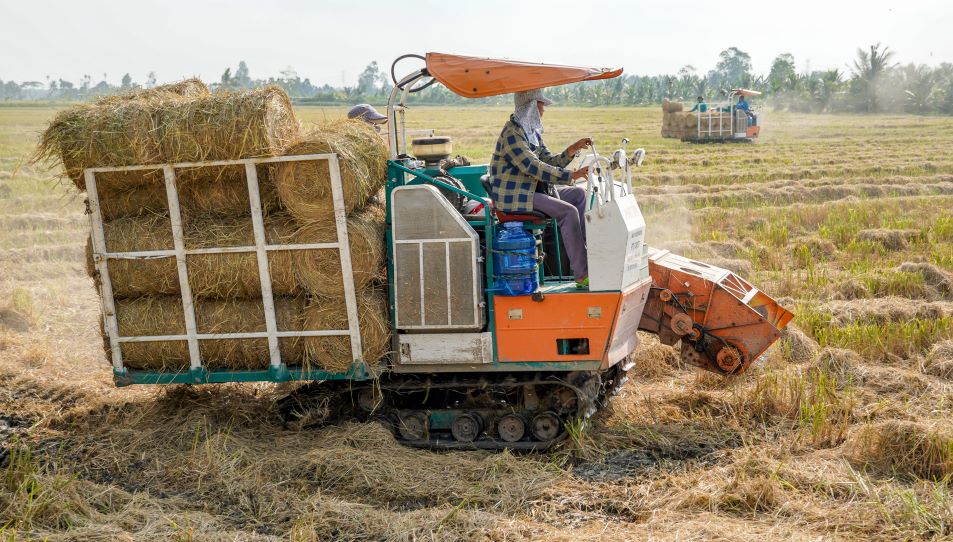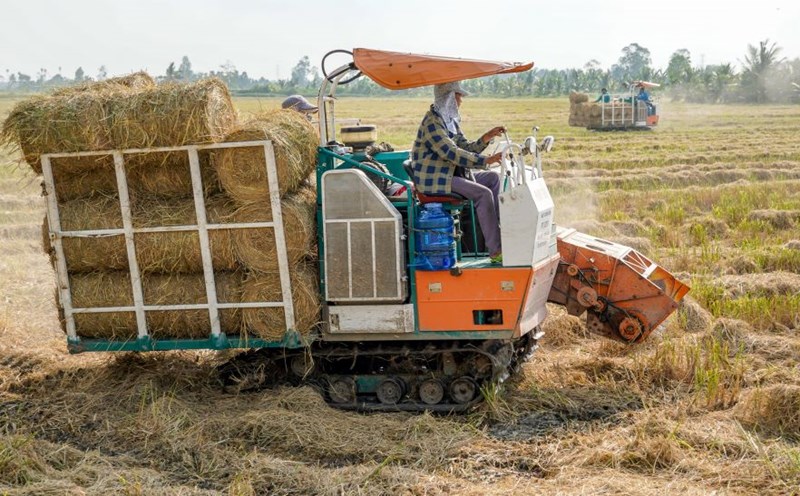Challenges in handling straw
After 1 year of implementation, the Project "Sustainable development of 1 million hectares of high-quality and low-emission rice cultivation associated with green growth in the Mekong Delta (MD) by 2030" (abbreviated as the Project) has gradually affirmed its correctness and necessity with remarkable results in economy and environment.

In addition to the advantages and challenges in high-quality rice cultivation and emission reduction, there is the application of unsynchronized agricultural technical solutions. Many localities and people are mainly interested in irrigation measures without paying due attention to straw handling. The burning of straw after harvest is still popular, causing environmental pollution and wasting resources that can be reused for agricultural production.
This poses a challenge in changing awareness and applying effective straw management solutions, such as growing them as organic fertilizers, using them as animal feed or raw materials for bioenergy production.
According to data published at the Forum "Strengthening the straw value chain - Supporting the Project of 1 million hectares of high-quality, low-emission rice associated with green growth in the Mekong Delta" on April 8, the Mekong Delta has over 24 million tons of straw per year from the rice farming process. If calculated preliminarily, the Project alone creates nearly 14 million tons of straw if cultivated 2 crops per year.
However, only about 30% of the total 24 million tons of straw collected and served production... The remaining 70% were burned in the fields or buried in rice fields. This means that a huge source of resources is not exploited properly to serve sustainable agricultural development and reduce greenhouse gas emissions.
Sustainable solutions
Sharing at the forum "Strengthening the straw value chain - Supporting the Project of 1 million hectares of high-quality, low-emission rice associated with green growth in the Mekong Delta", Mr. Nguyen Van Hung - Senior Expert of the International Rice Research Institute, said that if farmers grow rice in 3 crops/year, the yield will be 24 tons, equivalent to net profit of about 86 million VND/ha/year.
If farmers use organic fertilizers, this profit can increase to 100 million VND/ha/year thanks to reducing the cost of inorganic fertilizers and increasing rice productivity. For 1 hectare of rice, farmers will collect 12 tons of straw/year, the profit from straw rolling services is 3 million VND/ha/year. If we use straw to grow mushrooms, 1 hectare of straw will earn 1 ton of mushrooms/year, the profit is about 6.5 million VND/year...
This shows that, without burning straw, farmers can still create many nutrients for the land, reduce greenhouse gas emissions and increase income.

In recent times, the Ministry of Agriculture and Rural Development has worked with many domestic and foreign units and partners to find a place to consume straw. Among them, the Ministry has worked with Vietnam Electricity Group and agreed to include in the Power Plan VIII the investment in a thermal power plant in Vinh Thanh district (Can Tho city), with a capacity of 150MW, and a raw material demand of about 1 million tons of straw.
Japanese partners are also considering the possibility of building factories in the Mekong Delta to burn betel and straw to create silica, serving the cosmetics industry, car tires, etc. Currently, many businesses have invented biological products to treat straw, mechanical machinery to collect straw.
However, the above solutions have only solved a small part of the existing straw, and have not become a driving force. Therefore, the Ministry of Agriculture and Rural Development has proposed that the Vietnam Rice Industry Association coordinate with the National Agricultural Extension Center to develop a specific innovation program, creating added value from straw.














